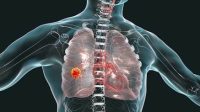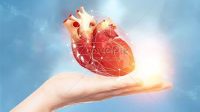Your heart is the tireless engine that keeps you going. It pumps blood throughout your body, delivering oxygen and nutrients to every cell. But just like any engine, your heart needs proper care to function optimally. Three major threats to heart health are high blood pressure, cholesterol imbalance, and stroke. Understanding these conditions and taking proactive steps can significantly reduce your risk and promote a long, healthy life.
High Blood Pressure: The Silent Threat
High blood pressure, also known as hypertension, is a condition where the force of blood pushing against your artery walls is consistently too high. It’s often called the “silent killer” because it rarely presents noticeable symptoms until it reaches severe stages.
Here’s how to understand high blood pressure:
- Blood Pressure Readings: Blood pressure is measured in millimeters of mercury (mmHg) with two values: systolic and diastolic. Systolic pressure represents the pressure when your heart contracts and pushes blood out. Diastolic pressure indicates the pressure between heartbeats when your heart relaxes and refills with blood. A healthy blood pressure reading is generally considered to be less than 120/80 mmHg.
- Stages of Hypertension: The American Heart Association (AHA) categorizes hypertension based on blood pressure readings:
- Normal: Less than 120/80 mmHg
- Elevated: Systolic 120-129 mmHg and diastolic less than 80 mmHg OR systolic less than 120 mmHg and diastolic 80-84 mmHg
- Stage 1 Hypertension: Systolic 130-139 mmHg OR diastolic 85-89 mmHg
- Stage 2 Hypertension: Systolic 140 mmHg or higher OR diastolic 90 mmHg or higher
- Complications of High Blood Pressure: Uncontrolled high blood pressure can lead to severe health consequences, including:
- Heart attack
- Stroke
- Heart failure
- Kidney disease
- Vision problems
Cholesterol: Friend or Foe?
Cholesterol is a waxy substance found in your blood and throughout your body. It plays a vital role in building healthy cells, but having too much of the “bad” kind of cholesterol can put your heart health at risk.
- Types of Cholesterol: There are two main types of cholesterol:
- Low-density lipoprotein (LDL): Often referred to as “bad” cholesterol, LDL builds up in your arteries, forming plaque that narrows the pathways for blood flow. This can lead to heart attack or stroke.
- High-density lipoprotein (HDL): Considered “good” cholesterol, HDL helps remove LDL from your arteries and carries it back to your liver, where it’s broken down and eliminated.
- Maintaining a Healthy Cholesterol Balance: A healthy cholesterol profile means having low LDL levels and high HDL levels. Here’s a breakdown of ideal ranges according to the National Heart, Lung, and Blood Institute (NHLBI):
- Total Cholesterol: Less than 200 mg/dL
- LDL Cholesterol: Less than 100 mg/dL
- HDL Cholesterol: 60 mg/dL or higher
- Risk Factors for High Cholesterol: Several factors can increase your risk of high cholesterol, including:
- Family history
- Unhealthy diet (high in saturated and trans fats, low in fiber)
- Lack of physical activity
- Obesity
- Smoking
Stroke: A Sudden Attack on the Brain
A stroke occurs when blood flow to part of your brain is interrupted. This can happen due to a blood clot blocking an artery (ischemic stroke) or a weakened blood vessel bursting (hemorrhagic stroke). Brain cells deprived of oxygen and nutrients begin to die, leading to permanent brain damage and potential disability.
Here’s what you need to know about stroke:
- Symptoms of Stroke: Recognizing the signs of stroke and acting immediately is crucial. Remember the acronym “FAST”:
- F: Face drooping – Does one side of the face droop or feel numb?
- A: Arm weakness – Is one arm weak or numb?
- S: Speech difficulty – Is speech slurred or difficult to understand?
- T: Time to call emergency services – If you experience any of these symptoms, call emergency services immediately. Every minute counts in minimizing stroke damage.
- Risk Factors for Stroke: Similar to heart disease, several factors can increase your risk of stroke, including:
- High blood pressure
- High cholesterol
- Diabetes
- Smoking
- Obesity
- Family history of stroke
- Certain medical conditions like atrial fibrillation (irregular heartbeat)






